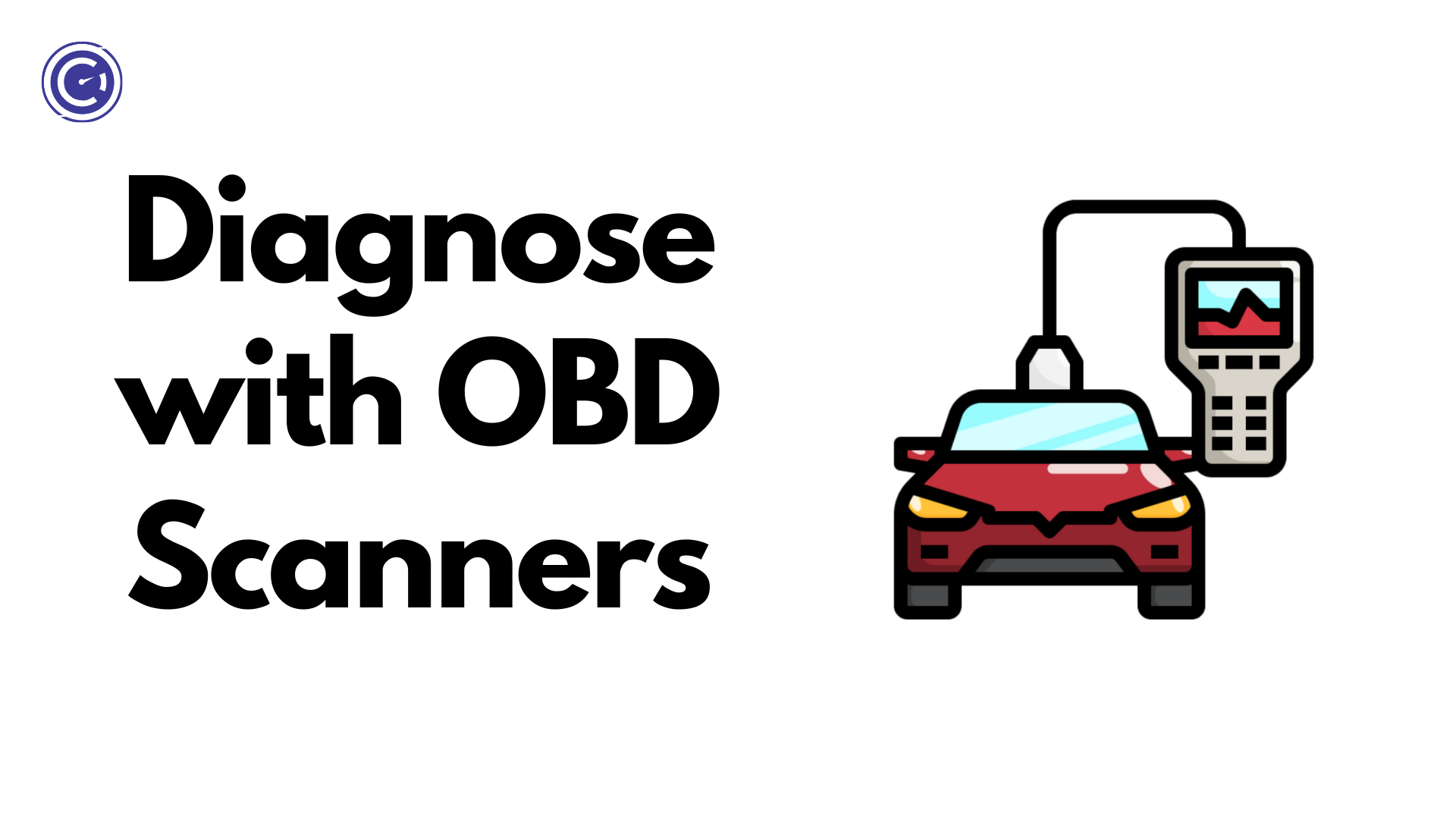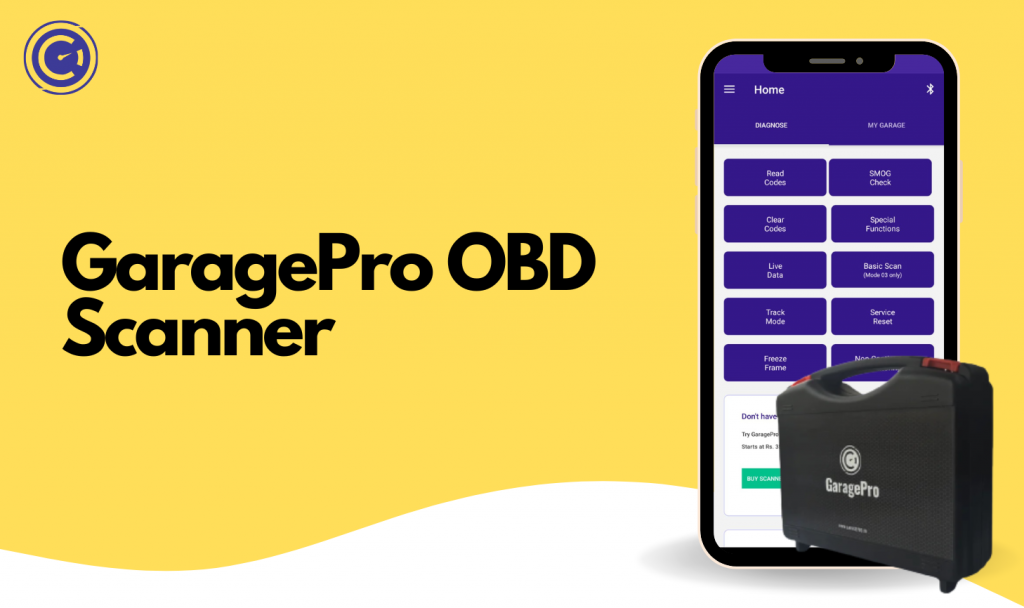Table of Contents
I. Introduction
In today’s fast-paced world, maintaining the health and performance of our vehicles is crucial. Regular vehicle diagnosis and maintenance play a vital role in ensuring safe and efficient operation on the road. One tool that has revolutionized vehicle maintenance is the On-Board Diagnostics (OBD) scanner. OBD scanners have become a virtual device for both professional mechanics and car owners alike.
A. Importance of vehicle diagnosis and maintenance

Proper vehicle diagnosis and maintenance are essential for several reasons:
- Early issue detection: Regular diagnosis helps identify potential problems or malfunctions in the vehicle’s systems at an early stage, preventing them from escalating into major issues.
- Enhanced safety: Well-maintained vehicles are safer to drive as they are less likely to experience unexpected breakdowns or malfunctions while on the road.
- Improved performance: Regular maintenance keeps the vehicle’s systems in optimal condition, ensuring smooth operation, better fuel efficiency, and overall improved performance.
- Longevity and resale value: Proper maintenance helps prolong the lifespan of a vehicle, preserving its value and reducing the need for costly repairs in the future.
B. Role of OBD scanners in modern vehicle maintenance

OBD scanners have revolutionized the way vehicle diagnosis and maintenance are conducted. These devices plug into the OBD port, which is found in most vehicles manufactured after 1996. Here’s how OBD scanners play a crucial role in modern vehicle maintenance:
- Code reading: OBD scanners can retrieve Diagnostic Trouble Codes (DTCs) stored in the vehicle’s onboard computer system. These codes provide valuable insights into the specific issues affecting various systems of the vehicle.
- Real-time data: OBD scanners can provide real-time data, such as engine RPM, coolant temperature, oxygen sensor readings, and more. This data allows for comprehensive monitoring and analysis of the vehicle’s performance.
- Performance optimization: OBD scanners enable advanced functions like performance tuning and parameter adjustments. This allows enthusiasts and professionals to optimize the vehicle’s performance for enhanced power, fuel efficiency, and overall driving experience.
- Maintenance reminders: OBD scanners can also provide maintenance reminders and alerts for routine services like oil changes, filter replacements, and more. This ensures that essential maintenance tasks are not overlooked, contributing to the longevity of the vehicle.
In the following sections, we will explore the various aspects of using OBD scanners for vehicle diagnosis and maintenance. From basic code reading to advanced performance tuning, we will guide you through the process of effectively utilizing OBD scanners to keep your vehicle in optimal condition.
II. Understanding OBD Scanners
A. Definition and explanation of OBD scanners
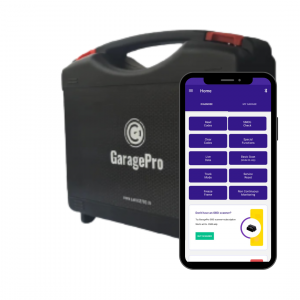
OBD scanners, also known as OBD readers or diagnostic tools, are devices used to interface with a vehicle’s On-Board Diagnostics system. They are designed to communicate with the vehicle’s onboard computer system and retrieve information about its various systems and components. OBD scanners provide valuable data and diagnostic trouble codes (DTCs) that help identify issues and monitor the vehicle’s performance.
B. Types of OBD scanners (wired, wireless, app-based, standalone)
- Wired OBD scanners: These scanners connect to the vehicle’s OBD port using a physical cable. They are typically more robust and offer a reliable connection for data retrieval and analysis.
- Wireless OBD scanners: These scanners communicate with the vehicle’s OBD system wirelessly, usually through Bluetooth or Wi-Fi connections. They offer convenience and flexibility, allowing users to connect and use them with ease.
- App-based OBD scanners: These scanners utilize smartphone or tablet applications to interface with the vehicle’s OBD system. Users need to download the corresponding app and connect the OBD scanner to their device via Bluetooth or Wi-Fi.
- Standalone OBD scanners: These scanners are self-contained devices that do not require additional devices or apps to function. They have built-in screens or displays to provide real-time data and diagnostic information.
C. OBD scanner features and capabilities
- Code reading and clearing: OBD scanners can read and clear diagnostic trouble codes (DTCs) stored in the vehicle’s onboard computer. This helps identify issues and turn off the check engine light after resolving them.
- Real-time data display: OBD scanners can display real-time data parameters such as engine RPM, vehicle speed, coolant temperature, fuel trims, and more. This allows for monitoring and analysis of the vehicle’s performance.
- Enhanced diagnostics: Advanced OBD scanners offer enhanced diagnostics capabilities, providing detailed information about specific systems and components. This includes reading live sensor data, running tests, and performing advanced troubleshooting.
- Performance tuning: Some OBD scanners have performance tuning capabilities, allowing users to optimize the vehicle’s engine parameters for improved power, fuel efficiency, and overall performance.
- Maintenance reminders and service functions: OBD scanners can provide maintenance reminders for routine services like oil changes, filter replacements, and more. They may also have additional service functions such as resetting service indicators or performing specific maintenance procedures.
Understanding the different types and capabilities of OBD scanners is essential for choosing the right one for your specific needs. In the next sections, we will explore how to use OBD scanners for vehicle diagnosis, maintenance, and performance tuning.
III. Getting Started with OBD Scanners
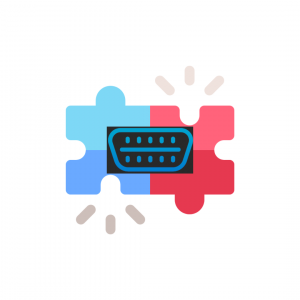
A. OBD scanner compatibility and vehicle support
Before using an OBD scanner, it’s crucial to ensure compatibility with your vehicle. OBD-II scanners are the most common type and are compatible with vehicles manufactured from 1996 onwards. However, some scanners may also support older OBD-I systems. Check the scanner’s specifications and the vehicle’s OBD compatibility to ensure a proper match.
B. OBD-II port location in vehicles
The OBD-II port is where you connect the OBD scanner to your vehicle. While the location may vary slightly depending on the vehicle make and model, it is usually found underneath the dashboard on the driver’s side. In some vehicles, it may be located in the center console or near the gear shifter. Refer to your vehicle’s user manual or consult online resources to locate the OBD-II port.
C. Connecting the OBD scanner to the vehicle
- Start by ensuring the vehicle’s ignition is turned off.
- Locate the OBD-II port and remove any protective covers if present.
- Take the OBD scanner and connect its cable or connector to the OBD-II port. Ensure a secure and snug connection.
- Turn on the vehicle’s ignition without starting the engine.
- Power on the OBD scanner. It will typically display a welcome screen or start-up sequence.
- Follow the scanner’s instructions to establish a connection with the vehicle’s onboard computer. This may involve selecting the vehicle’s make, model, and year.
- Once the connection is established, the OBD scanner will retrieve information from the vehicle’s systems and display it on its screen or transmit it to a connected device.
Note: Some wireless or app-based OBD scanners may require additional steps to establish a connection, such as pairing with a Bluetooth device or launching the corresponding app on your smartphone or tablet. Follow the manufacturer’s instructions specific to your scanner model.
By successfully connecting the OBD scanner to your vehicle, you are now ready to access valuable diagnostic information and perform various maintenance tasks. In the following sections, we will delve into the functionalities and applications of OBD scanners for vehicle diagnosis and maintenance.
IV. Performing Basic Vehicle Diagnosis
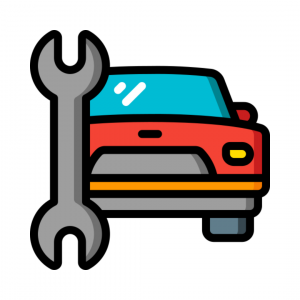
A. Reading diagnostic trouble codes (DTCs)
One of the primary functions of an OBD scanner is to read diagnostic trouble codes (DTCs) stored in the vehicle’s onboard computer. DTCs are specific codes that indicate the presence of a problem or malfunction in various systems of the vehicle. With the OBD scanner connected and the vehicle’s ignition on, you can access the DTCs through the scanner’s menu or display.
B. Interpreting DTCs and their meanings
Once you have retrieved the DTCs, it’s essential to understand their meanings to identify the underlying issues. Each DTC consists of a series of alphanumeric characters, such as P0XXX or B1XXX. These codes can be looked up in the scanner’s manual or online databases to obtain their definitions. Understanding the DTCs will give you insight into the specific system or component that requires attention.
C. Clearing DTCs and resetting the check engine light
After diagnosing and addressing the issues causing the DTCs, you may want to clear the codes from the vehicle’s memory and reset the check engine light. This can be done using the OBD scanner’s functions. Clearing the DTCs is not always necessary, especially if the underlying problem persists. However, if the issue has been resolved or if it was a minor glitch, clearing the codes will turn off the check engine light and ensure that new codes will only appear if a new problem arises.
It’s important to note that clearing DTCs without properly addressing the underlying issue is not recommended, as it may hinder further diagnostics or mask potential problems. If you’re unsure about the significance of a DTC or how to address it, it’s advisable to consult a professional mechanic or refer to reliable repair resources.
Performing basic vehicle diagnosis using an OBD scanner allows you to access and understand the diagnostic trouble codes stored in your vehicle’s computer system. By interpreting these codes, you can identify potential issues and take appropriate actions for maintenance and repairs. In the next section, we will explore advanced diagnostic capabilities and maintenance functions provided by OBD scanners.
V. Advanced Diagnostic Functions
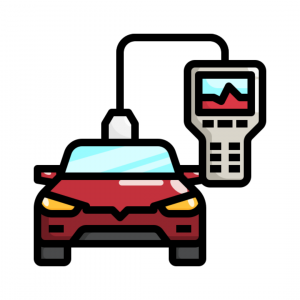
A. Live data streaming and monitoring
One of the valuable features of OBD scanners is the ability to stream and monitor live data from various sensors and components in real time. This allows you to observe the performance and behavior of different systems while the vehicle is running. The live data can include parameters such as engine RPM, coolant temperature, fuel trim, oxygen sensor readings, and more. By analyzing this data, you can identify abnormalities or fluctuations that may indicate underlying issues.
B. Freeze frame data analysis
In certain situations, an OBD scanner can capture and store freeze-frame data when a fault occurs. Freeze frame data provides a snapshot of the vehicle’s operating conditions at the time the fault was detected. It includes information such as engine load, vehicle speed, throttle position, and more. Analyzing the freeze frame data can provide additional context and help pinpoint the cause of the issue.
C. Oxygen sensor testing and monitoring
OBD scanners with advanced diagnostic capabilities often offer specific functions for testing and monitoring oxygen sensors. These sensors play a crucial role in measuring the oxygen content in the exhaust gases, providing feedback for fuel mixture control. With the OBD scanner, you can check the oxygen sensor readings and their response times to ensure proper functioning. This helps in diagnosing issues related to fuel efficiency, emissions, and overall engine performance.
D. Emission readiness testing
Emission readiness testing is an essential function of OBD scanners, particularly when it comes to vehicle inspections and emissions compliance. It allows you to check the status of different emission-related systems and components, ensuring they are operating within the specified parameters. The OBD scanner can display the readiness status, indicating whether the vehicle is ready for an emissions test. This helps you identify any potential issues that need to be addressed before undergoing an inspection.
The advanced diagnostic functions of OBD scanners provide deeper insights into the performance and condition of your vehicle. By utilizing live data streaming, freeze frame data analysis, oxygen sensor testing, and emission readiness testing, you can gain a comprehensive understanding of the vehicle’s systems and make informed maintenance decisions. In the next section, we will explore the maintenance functions and capabilities offered by OBD scanners.
VI. Maintenance and Service Functions

A. Oil reset and maintenance reminders
Many OBD scanners provide convenient features for resetting oil change indicators and setting maintenance reminders. These functions help you keep track of regular maintenance tasks and ensure they are performed on time. By resetting the oil change indicator, you can synchronize it with your actual oil change schedule. Additionally, setting maintenance reminders based on mileage or time intervals helps you stay proactive in servicing your vehicle.
B. Battery voltage monitoring
Monitoring the battery voltage is crucial for maintaining optimal battery health and preventing unexpected breakdowns. Some OBD scanners offer the ability to check the battery voltage in real time. This allows you to assess the battery’s condition and determine if it requires charging replacement, or further inspection. Monitoring the battery voltage helps you detect potential charging system issues and take appropriate action.
C. ABS and airbag system diagnosis
Advanced OBD scanners may have the capability to diagnose and retrieve trouble codes related to the Anti-Lock Braking System (ABS) and airbag systems. These systems are critical for vehicle safety, and being able to diagnose potential faults can help you address any safety concerns promptly. By accessing and interpreting ABS and airbag system codes, you can identify specific issues and seek professional assistance for repairs or further troubleshooting.
D. Transmission and powertrain diagnostics
In addition to engine diagnostics, some OBD scanners offer features for diagnosing transmission and powertrain issues. These scanners can retrieve trouble codes related to the transmission control module and other powertrain components. By analyzing these codes, you can identify problems such as transmission shifting issues, torque converter malfunctions, or other powertrain-related faults. This information helps you make informed decisions regarding repairs or seeking professional assistance.
The maintenance and service functions of OBD scanners enable you to perform various tasks to keep your vehicle in optimal condition. Whether it’s resetting oil change indicators, monitoring battery voltage, diagnosing ABS and airbag systems, or addressing transmission and powertrain issues, these features empower you to stay proactive in maintaining your vehicle. In the next section, we will discuss the importance of regularly using OBD scanners for vehicle diagnosis and maintenance.
VII. Using OBD Scanners for Performance Tuning

A. Accessing performance data and parameters
OBD scanners not only serve as diagnostic tools but can also be valuable for performance tuning. They allow you to access and monitor various performance data and parameters of your vehicle. By connecting the OBD scanner to the vehicle’s OBD-II port, you can retrieve real-time information such as engine RPM, throttle position, intake air temperature, fuel trim, and more. This data provides valuable insights into your vehicle’s performance characteristics and serves as a foundation for optimizing its performance.
B. Tuning engine parameters for improved performance
With access to performance data, OBD scanners enable you to make adjustments to engine parameters to enhance performance. Some advanced OBD scanners provide the functionality to modify settings such as fuel mapping, ignition timing, and throttle response. By fine-tuning these parameters, you can optimize the engine’s performance for increased horsepower, torque, and overall responsiveness. However, it’s important to note that making these adjustments should be done with caution and within safe limits to avoid damaging the engine.
C. Monitoring performance gains and adjustments
As you make changes to the engine parameters, OBD scanners allow you to monitor and evaluate the performance gains and adjustments in real-time. You can observe the impact of the modifications on various performance metrics such as horsepower, torque, acceleration, and fuel efficiency. This feedback loop enables you to assess the effectiveness of the tuning adjustments and make further refinements if needed.
Using OBD scanners for performance tuning provides enthusiasts with a powerful tool to unlock the full potential of their vehicles. By accessing performance data, tuning engine parameters, and monitoring the results, you can fine-tune your vehicle’s performance to meet your specific preferences and driving style. However, it’s important to have a good understanding of engine mechanics and performance tuning principles before making any modifications. In the next section, we will discuss the benefits of using OBD scanners for performance tuning in more detail.
VIII. Tips and Best Practices for OBD Scanner Usage

A. Regularly updating OBD scanner software
- Keep the OBD scanner software up to date to ensure compatibility with newer vehicle models and access to the latest features and functions.
- Check for software updates from the manufacturer’s website or through the OBD scanner’s software update feature.
B. Taking necessary safety precautions
- Before connecting the OBD scanner to the vehicle, ensure that the ignition is turned off to prevent any potential electrical hazards.
- Follow the manufacturer’s instructions and safety guidelines while handling and using the OBD scanner.
Use caution when accessing and modifying engine parameters, as improper adjustments can lead to engine damage or voiding of warranties.
C. Consulting vehicle-specific resources and guides
- Refer to the vehicle’s owner’s manual or manufacturer’s documentation for specific information regarding the OBD-II port location and compatibility with OBD scanners.
- Online forums, user groups, and vehicle-specific communities can provide valuable insights and guidance on using OBD scanners for your particular make and model.
By following these tips and best practices, you can ensure a safe and effective experience when using an OBD scanner for vehicle diagnosis, maintenance, and performance tuning. Remember to stay informed, exercise caution, and consult reliable resources to make the most out of your OBD scanner and optimize your vehicle’s performance.
IX. Conclusion
A. Recap of the benefits and capabilities of OBD scanners
- OBD scanners provide valuable insights into a vehicle’s health and performance, enabling efficient diagnosis and maintenance.
- They offer access to diagnostic trouble codes (DTCs), live data streaming, and various service functions for comprehensive vehicle monitoring.
B. Encouragement to utilize OBD scanners for vehicle diagnosis and maintenance
- Emphasize the importance of regular vehicle diagnosis and maintenance for optimal performance, fuel efficiency, and longevity.
- Highlight the convenience and cost-effectiveness of using OBD scanners to identify issues early and prevent potential problems.
C. Importance of staying informed about vehicle health through OBD scanner usage
- OBD scanners empower vehicle owners to take a proactive approach to their vehicle’s health by providing real-time data and insights.
- By utilizing OBD scanners, drivers can stay informed about critical parameters, ensure compliance with emission standards, and make informed decisions about maintenance and repairs.
In conclusion, OBD scanners are powerful tools that enable efficient vehicle diagnosis, maintenance, and even performance tuning. By harnessing the capabilities of OBD scanners, drivers can effectively monitor their vehicle’s health, detect and resolve issues promptly, and optimize overall performance. Embrace the benefits of OBD scanner usage to ensure a well-maintained and reliable vehicle that delivers optimal performance and efficiency. Stay informed, be proactive, and make the most out of your OBD scanner to keep your vehicle running smoothly for years to come. So here you have it OBD Scanners for Diagnosis and Maintenance. If you have any doubts or queries comment down below.

